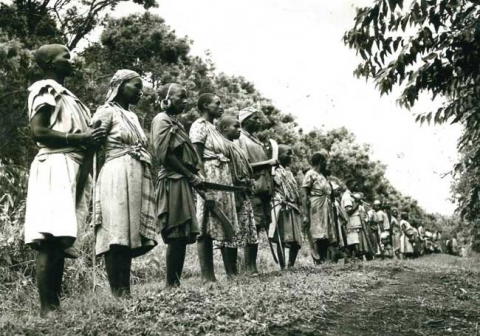Freedom fighter entertained himself on stolen wooden beds in the forest as manhunt for his capture intensified
By GW Ngari
Editor-at-Large
A former primary school teacher, a diary and timber clerk, a pig farmhand with a missing left index finger, a trader in hides and an admired but violent thief, were hanged in February 18, 1957.
All six answered to the name, Field Marshal Dedan Kimathi- freedom fighter-and whose grave, his Foundation said, has finally been located at Kamiti Maximum Prison in Nairobi.
Though he has been honoured him with a street, estate, high school, university and monument several inches shy of his actual height, his family now want the Jubilee government to help it exhume Kimathi for a burial befitting his status as a freedom fighter and whose hanging ended the Mau Mau of independence.
Indeed, for the colonial government, Kimathi had to die if guns in the war of independence from British rule in Kenya were to be silenced.
Never mind according to imperialists “more Europeans were killed in traffic accidents within the city limits of Nairobi than were murdered by terrorists in the whole of Kenya.”
Terrorists refers to Mau Mau insurgents who believed Kimathi had the power to alter rivers, to transform the ranching lands of European farmers into lakes of stagnant water besides leading them to certain victory as they killed all black, white or brown who stood against them.
Captured Mau Mau were incorporated in his search party
Kimathi was captured through a ruthless man hunt spearheaded by colonial officer Ian Henderson. His mission succeeded largely due to information gathered from captured Mau Mau militia and who were incorporated in his search party. After all, they had all the secrets to war codes, routes and sleeper caves.
The accounts they gave of life in the Mt Kenya and Aberdare Ranges where the Mau Mau were based formed the basis of the 1958 book, Man Hunt in Kenya, Philip Goodhart’s account of how Henderson employed Mau Mau turncoats in betraying, tracking and capturing Kimathi.
In the middle of a bloody war, Kimathi managed to be live to the title of a Field Marshal inside the Aberdare forest.
Among his creature comforts were sleeping soundly in stolen wooden beds, wearing new clothes and having access to medicine.
For relaxation, traditional dances were on the cards
“Prime Minister Sir Dedan Kimathi” as he called himself, was guarded by 60 plus handpicked Mau Mau devotees. For relaxation, traditional dances were on the cards from “young Kikuyu girls abducted from the Kikuyu reserve,” recalls Henderson.
This life of forested luxury while fighting for freedom dwindled in scale as more Mau Mau fighters were captured by the colonial army, police and home guards. “The ‘passive wing’ of Mau Mau in reserves, towns and farms were broken by imperial forces, gradually thinning supplies of information, arms, food, clothing, medicine to the ‘military wing’ in the forests.
Mau Mau raids progressively dwindled, and when they happened, arrests and casualties escalated. The ripple effect on Kimathi was paranoia. He issued a raft of 30 plus petty offenses among them; no eating before food was shared, speaking in his presence without permission, failing to pray to Ngai (God) and sleeping with Mau Mau girls (when you were not a Field Marshall or General).
Kimathi was finally captured in 1956 by a Home Guard cop named Ndirangu. He found him in a bush lying down, his leopard skin coat and dreadlocks spread out. Ndirangu shot Kimathi thrice, missing twice before hitting the target. It was then officer Henderson appeared with handcuffs to take the credit and save Ndirangu from later being killed and the reason only his first name was given.

